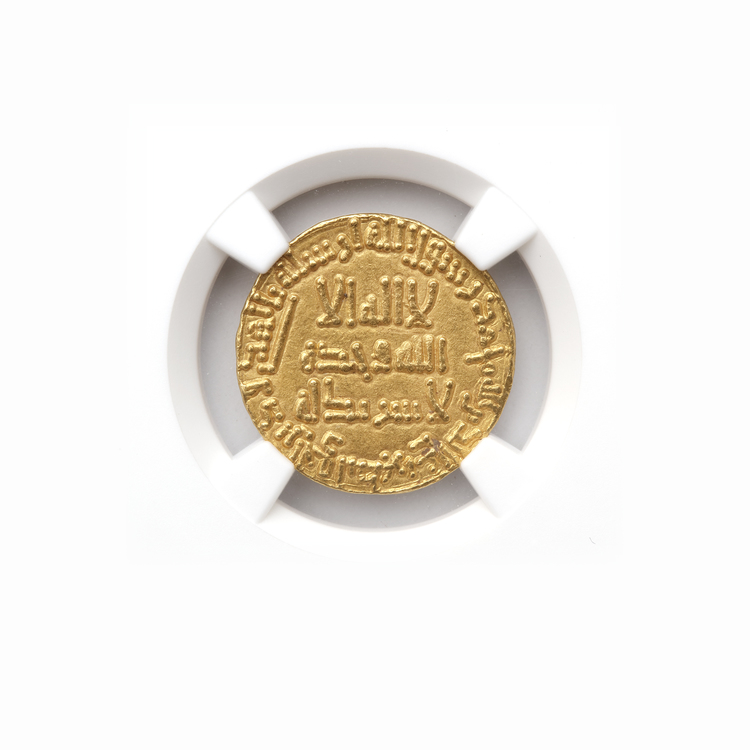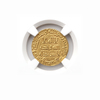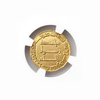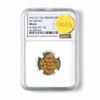Lot 433 ABBASID CALIPHATE, TEMP. AL-SAFFAH (132-136AH / 749-754AD), GOLD DINAR, WITHOUT MINT NAME, DATED 132 AH/ 749 AD
An Extremely Rare First-Year Gold Dinar of Abdullah Al-Saffah – 132 AH / 716 AD Weight: 4.24 grams Condition: Very Good Accompanied by a Certificate of Authenticity This exceptional and historically significant gold dinar marks the first year of minting under the Abbasid Caliph Abdullah Al-Saffah. Struck in the year 132 AH (716 AD), it represents a pivotal moment in Islamic numismatic history. Obverse (Side One): In the name of Allah, this dinar was struck in the year one hundred and thirty-two. Muhammad is the Messenger of Allah. (Arabic: بسم الله، ضُرب هذا الدينار سنة اثنتين وثلاثين ومئة. محمد رسول الله) Reverse (Side Two): Muhammad is the Messenger of Allah, whom He sent with guidance and the religion of truth, to make it prevail over all religions. There is no god but Allah alone; He has no partner. (Arabic: محمد رسول الله، أرسله بالهدى ودين الحق ليُظهره على الدين كله، لا إله إلا الله وحده لا شريك له)
Background information: Full Name: Abū al-ʿAbbās ʿAbd Allāh ibn Muḥammad ibn ʿAlī ibn ʿAbd Allāh ibn al-ʿAbbās ibn ʿAbd al-Muṭṭalib al-Qurashī al-Hāshimī Title: Commander of the Faithful (Amīr al-Muʾminīn) Regnal Name: al-Saffāḥ ("The Blood-Shedder") Reign: 750–754 AD / 132–136 AH Coronation: 132 AH / 750 AD Place of Birth: al-Ḥumaymah, southern Jordan Place of Burial: al-Anbār, Iraq Mother: Rita al-Ḥārithiyya
Abū al-ʿAbbās al-Saffāḥ, the founder of the illustrious Abbasid dynasty, was the first caliph of the new Islamic era that followed the collapse of Umayyad authority. Ascending the throne at the age of twenty-six, he became the nineteenth caliph in Islamic history and ushered in a profound political and cultural transformation across the Islamic world. The epithet "al-Saffāḥ," often translated as "the Blood-Shedder," reflected both his resolute efforts to eliminate lingering Umayyad influence and the turbulent nature of his consolidation of power. Known for his firm rule and strategic appointments—often favoring members of his own family—he established a strong foundation for what would become one of the most influential caliphates in Islamic history. His reign, though short-lived, ended in 136 AH (754 AD) when he succumbed to smallpox in the city of al-Anbār. One of the most enduring legacies of al-Saffāḥ’s reign was the introduction of the first Abbasid gold dinar, minted in 132 AH. This historic coin preserved the circular form inherited from the Umayyads but introduced a significant ideological shift in its epigraphic content. Inscribed in austere Kufic script, the new dinar replaced the Umayyad Qur’anic inscription—“God is One, God the Eternal, He neither begets nor is begotten” (Allāh Aḥad, Allāh al-Ṣamad, lam yalid wa lam yūlad)—with the powerful declaration: “Muḥammad is the Messenger of God” (Muḥammad Rasūl Allāh), signaling the Abbasids' theological emphasis and their claim to legitimate succession. This dinar was struck in pure 24-carat gold, with a legal weight of approximately 4.24 grams and a thickness of around 1 millimeter. Minor variations in weight occurred, likely due to the limitations of contemporary minting techniques. The dinar of al-Saffāḥ is regarded today as exceptionally rare, a reflection of both its limited issue and the volatile political circumstances of the early Abbasid period. Surviving examples are highly prized by collectors and historians alike. The specimen described here remains in very good condition, representing not only a numismatic milestone but also a tangible testament to the dawn of Abbasid rule.



